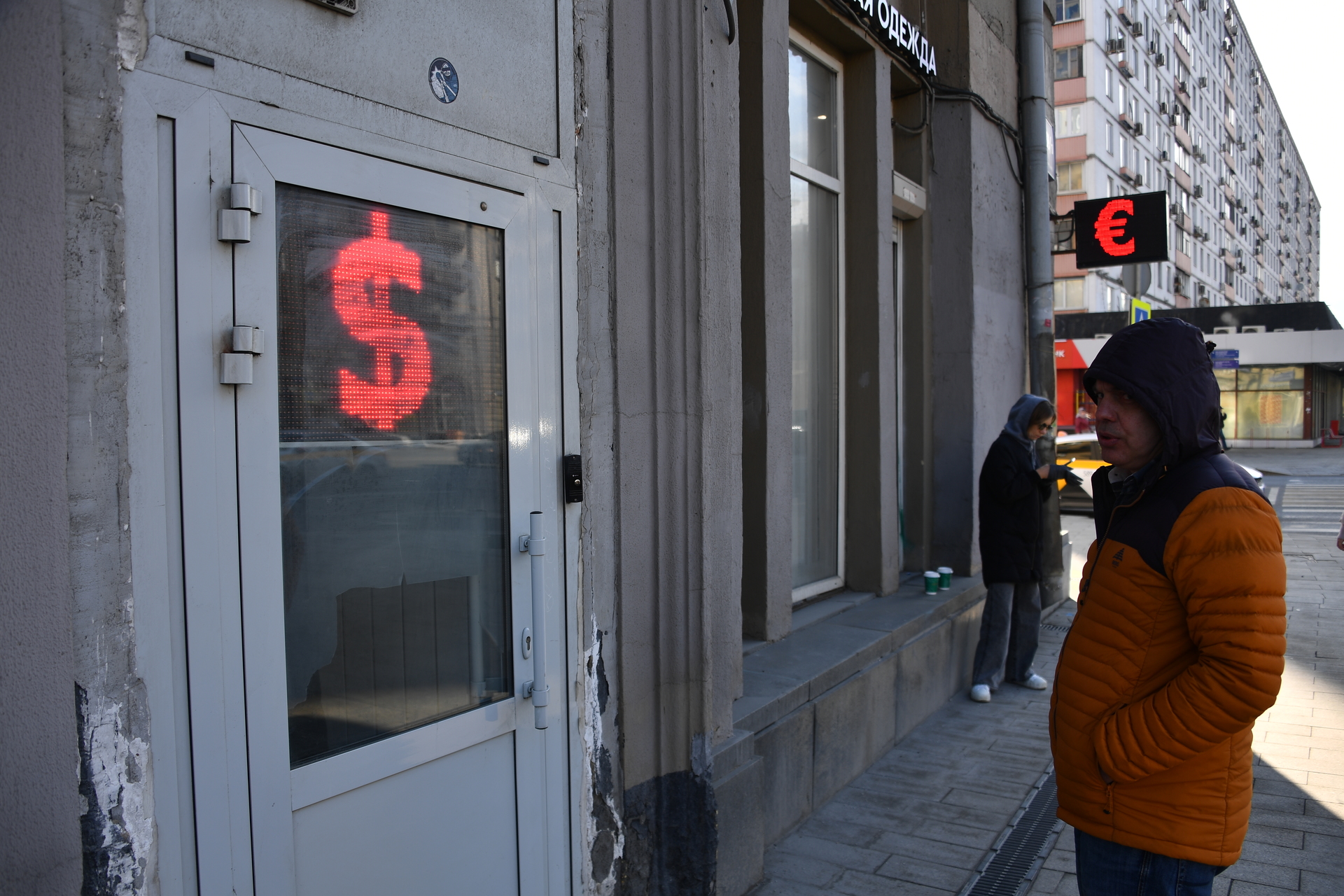On Thursday, May 5, the Russian currency strengthens on the Moscow Exchange.
At the beginning of trading, the dollar exchange rate decreased by almost 1.5% and for the first time since March 2020 reached 65.31 rubles.
The euro exchange rate at the same time fell by 1% - to 69.72 rubles.
The last time a similar value could be observed back in February 2020.
Compared to the indicators of the beginning of spring, the Russian currency was able to rise in price by almost two times relative to the American and European ones.
So, back in the first half of March 2022, against the backdrop of Western sanctions against Moscow, the dollar and euro exchange rates for the first time rose above 121 rubles and 132 rubles, respectively.
Then, to stabilize the situation in the financial market, the government and the Central Bank took a set of measures.
In particular, the authorities obliged exporters to sell 80% of their foreign exchange earnings.
Along with this, the Central Bank temporarily raised the rate to 20% per annum, limited the withdrawal of capital abroad and introduced a temporary procedure for the circulation of cash in the country.
“As a result of the decisions made, now the supply of currency on the Moscow Exchange significantly exceeds the demand for it.
This factor has been the main driver of the strengthening of the ruble over the past two months, ”said Oleg Syrovatkin, a leading analyst at the Otkritie Investments department of global research, in a conversation with RT.
According to FG Finam analyst Alexander Potavin, the inflow of foreign currency into Russia from exports is still preserved due to high prices for raw materials.
At the same time, imports fell by about half in the spring, as the traditional channels for the supply of foreign goods to the country were partially blocked.
At the same time, the demand for currency from the population also remains low.
“That is, there is still a lot of currency in the country, but there are few buyers of it.
Yes, and now there is not much to spend dollars and euros on.
That is why the ruble exchange rate is strengthening, ”Potavin explained in an interview with RT.
© Komsomolskaya Pravda/Global Look Press
It is curious that on the eve of the European Union announced plans to introduce a sixth package of sanctions against Russia.
As the head of the European Commission, Ursula von der Leyen, stated, the restrictions imply, in particular, the disconnection of several more Russian banks from the SWIFT system and the refusal of the EU countries to purchase oil from Moscow.
As expected, the restrictions may come into force in the coming days.
However, reports of new sanctions did not affect the dynamics of the ruble.
“The ruble has actually got rid of geopolitical news and does not even react to the possible introduction of an oil embargo by the EU.
Although earlier such news would have caused a stressful situation for the national currency.
Therefore, in the medium term, the actions of the Russian authorities will largely influence the ruble exchange rate, ”Sergey Suverov, investment strategist at Arikacapital, suggested in an interview with RT.
According to Alexander Potavin, if the current conditions remain unchanged, there should not be any serious fluctuations in the Russian currency market during the month.
Nevertheless, the Central Bank may limit further strengthening of the national currency, since a too strong ruble is unprofitable for the country's budget, the expert added.
“The Russian budget for this year has been drawn up at the rate of 72 rubles per dollar.
At the current exchange rate of 65-66 rubles per dollar, there will be clearly less money in the treasury, especially since conducting a military special operation in Ukraine is a very costly undertaking.
For this reason, in May, we should expect that the Central Bank will continue to gradually remove regulatory restrictions and thereby stop the further strengthening of the national currency,” Potavin explained.
It should be noted that back in April, the Bank of Russia began to soften some of the previously introduced measures.
For example, the regulator lowered the key rate to 14% per annum, canceled the commission for buying foreign currency on the stock exchange through brokers, and again allowed Russians to exchange rubles for dollars and euros at bank cash desks.
In addition, now the Central Bank proposes to cancel the mandatory sale of foreign exchange earnings for non-resource non-energy exporters, and for raw materials - to reduce the standard from the current 80% to 50%.
Also, the Central Bank considers it important to abandon the mandatory sale of foreign exchange earnings if it comes in the currencies of friendly countries.
This was previously stated by the head of the regulator Elvira Nabiullina.
According to Oleg Syrovatkin, in the near future the dollar exchange rate may stabilize in the range of 65-70 rubles.
Meanwhile, already in the second half of 2022, the indicator will begin to return to the range of 85-90 rubles, the expert did not rule out.

